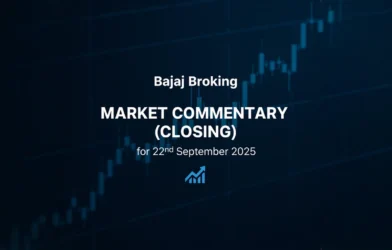Author: Aditya Pareek | EQMint | General News
Global investment bank Morgan Stanley has upgraded its bull-case outlook for Indian equities, projecting that the Sensex could reach 107,000 by December 2026, marking a potential 26% upside from current levels.
The revised target, published in the firm’s latest India strategy report, reflects expectations of a positive growth surprise and a strong market re-rating over the next 18–24 months.
Earlier, the brokerage had forecast the Sensex to hit 100,000 by June 2026, a scenario to which it had assigned a 30% probability. The upgraded projection signals improving confidence in India’s macroeconomic and earnings trajectory.
India Posts Weakest Relative Performance Since 1994
Morgan Stanley noted that India is ending 2025 with its worst relative performance against emerging markets (EM) in over three decades — the weakest since 1994.
However, analysts believe the underperformance cycle may have bottomed out.
They expect Indian equities to stage a meaningful comeback as relative valuations have “corrected significantly” and likely hit their trough in October 2025.
The brokerage says the conditions are aligned for India to deliver a growth surprise, paving the way for a re-rating of the benchmark indices.
Base Case: Sensex at 95,000 by December 2026
Morgan Stanley’s base-case target for the Sensex stands at 95,000 by December 2026, with a 50% probability assigned to this scenario.
This projection assumes a continuation of macroeconomic stability supported by:
- Fiscal consolidation
- Fresh private sector investment
- A positive gap between real economic growth and real interest rates
- Strong domestic demand
- Benign crude oil prices
- Stable global growth
In this scenario, analysts expect Sensex earnings to grow at 17% annually through FY28.
The report also factors in monetary easing, predicting one 25-bps cut in short-term interest rates and a supportive liquidity environment.
US–India Tariff Issues Expected to Ease
A key assumption in Morgan Stanley’s base-case outlook is a resolution of ongoing tariff differences between India and the United States, expected in the coming weeks.
The analysts also rule out any major bunching-up of equity issuances, suggesting that retail investors will continue to outbid supply, supporting market breadth and liquidity.
“We see earnings compounding strongly and expect a supportive macro backdrop for the next few years,” said Ridham Desai, Managing Director and Chief India Equity Strategist at Morgan Stanley, in a report co-authored with Nayant Parekh.
Bull Case: What Could Drive Sensex to 107,000
For the index to surge to 107,000, Morgan Stanley highlights several potential catalysts:
- A sharper-than-expected economic growth cycle
- Smooth fiscal consolidation without growth sacrifice
- Sustained private investment momentum
- Lower-than-expected inflation and stable crude prices
- Global recovery supporting India’s export sectors
- Strong retail investor participation
- Continued policy reforms and regulatory stability
In this environment, India could experience a meaningful re-rating, with valuations rising alongside earnings growth.
Bear Case: Sensex Could Fall to 76,000 by December 2026
Despite the optimism, Morgan Stanley has also outlined a bear-case scenario, attaching a 20% probability to the Sensex slipping to 76,000.
This downturn could be triggered by several macro and global factors:
- Crude oil prices rising above $100 per barrel
- The RBI tightening monetary policy to protect macro stability
- A slowdown in global growth
- A potential US recession
- Deterioration in US–India trade relations
- Lower-than-expected earnings growth
- De-rating of valuation multiples as macro conditions weaken
In this case, Morgan Stanley expects Sensex earnings growth to slow to 15% annually over FY25–28, with a noticeably softer FY26.
What This Means for Indian Markets
The brokerage’s revised forecast highlights a key turning point for India’s markets. After a year of lagging EM peers, Morgan Stanley believes a recovery is on the horizon, supported by improving valuations, macro stability, and resilient corporate earnings.
Analysts say the market’s trajectory over the next two years will hinge on:
- Domestic consumption demand
- The pace of private capex revival
- Inflation and interest rates
- Global growth and geopolitical stability
- Crude price movements
If these variables move in India’s favor, the Sensex could be poised for a strong multi-year upcycle, with 2026 emerging as a pivotal year.
Conclusion
Morgan Stanley’s upgraded outlook signals confidence in India’s long-term economic momentum. While risks remain — particularly on the global front — the brokerage believes the balance of probabilities favors a renewed market rally leading into 2026.
With the Sensex potentially charting paths toward 95,000 in the base case and 107,000 in the bull case, the report underscores India’s rising importance in global equity portfolios.
For investors, the coming months will determine whether India’s markets can convert macro stability and earnings growth into sustained valuation gains.
For more such information visit EQMint
Disclaimer: This article is based on information available from public sources. It has not been reported by EQMint journalists. EQMint has compiled and presented the content for informational purposes only and does not guarantee its accuracy or completeness. Readers are advised to verify details independently before relying on them.







